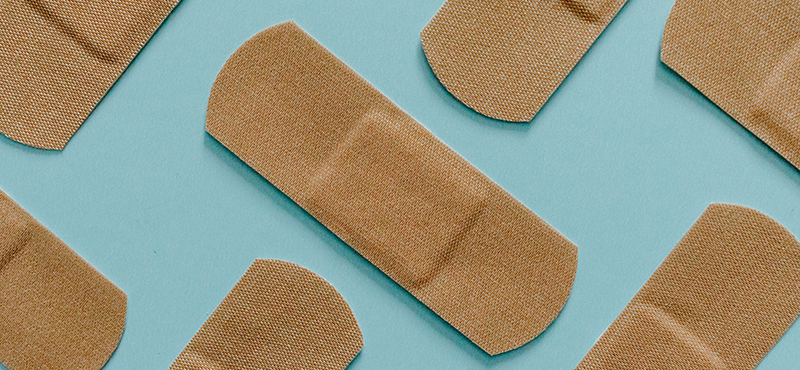
If you are having weight loss surgery, you may be interested in how you can enhance your recovery after weight loss surgery so you can get back to normal activities and ensure optimal safety and success. This blog will address some of the things we tell our patients – the do’s and don’ts after weight loss surgery.
The recommendations we make in this article apply to all of the weight loss surgery procedures, and largely apply to any surgical operation. We want to stress that what we recommend in this article is what we generally tell our patients; however, this may not be consistent with what your surgeon or program recommends.
4 Tips to Improve Recovery after Weight Loss Surgery
1. Follow Your Doctor’s Instructions
The number one tip we can give our bariatric patients for success immediately after their surgery and in the years to come is to follow what your weight loss surgery program recommends. Over the years, I have seen some patients follow instructions that they like and disregard the ones they don’t like or feel apply to them.
When you leave the hospital, you will be given a bunch of paperwork. Most patients will tend to ignore some, or all, of this paper. However, it will contain your doctors’ specific recommendations and follow-up instructions, so please pay attention to your nurse’s discharge instructions and the discharge paperwork you are sent home with. If you don’t understand why you are being told to do/not do something, please ask before disregarding the instructions.
2. Keep Your Follow-Up Appointments
Follow-up after weight loss surgery is essential for your success and recovery after weight loss surgery. In the short term, follow-up ensures that your recovery after weight loss surgery is healthy and you are advancing through your diet as expected. We worry about early complications, although rare, it is much better to pick up on early warning signs before a patient becomes ill. If you feel well and your incisions look good, an appointment may seem like a waste of time. But nothing could be further from the truth. At your initial post-op follow-up visit, we will ask you how you feel and look for other things that you may not think are important but could be early warning signs.
Additionally, during the early postoperative period, we adjust our patient’s medications. Most of the time, we are discontinuing medications that our patients take (hypertensive and diabetic medications); however, at times, we need to add back some of these meds based on how the patient is doing, and this really can only be done during your follow-up visits.
3. Pay Attention to Your Incisions
Even though we perform weight loss surgery using minimally invasive techniques, you will still have 5 to 7 small incisions. It’s uncommon but occasionally, wound infections will occur while in recovery after weight loss surgery. We tell our patients that they can shower the next day after surgery; however, recommendations might vary based on how the incision is closed. Early signs of wound infection are increasing pain at the site, redness, and swelling. Some drainage from the incision is to be expected (thin and usually transparent in color); however, drainage that is cloudy or has an odor is not normal and needs to be reported to your surgeon immediately.
Aside from infections, other potential wound problems include hematomas (blood in the incision). When this occurs, the patient will usually experience more pain at this site than the other areas of the incision point, yet the skin around the incision will look normal.
After your surgery, there will likely be some swelling, and after about a week, bruising will probably become noticeable. As the body starts to break down the clotted blood, there might be some dark, bloody drainage at the corner of the incisions, which may require your surgeon to aspirate or even open the incision to get all of the old blood out.
A common problem with wound care is some patients trying to get their incisions a bit too clean. Avoid scrubbing the incision or removing scabs that form. You don’t need to wash with alcohol or peroxide either. We recommend that you shower and wash as you usually would. Unless specifically instructed otherwise, a gentle wash with soap and water is more than adequate. We recommend not to submerge your incisions underwater or swim for about a week or two. Some surgeons will use glue over the incisions (dermabod) or adhesive strips (Steri-strips) to reinforce the closure. If this is the case, do not pick at or remove the glue or strips.
4. Know When To Go To the Emergency Room
True emergencies after weight loss surgery are uncommon, but they do happen, and you need to know what to do. What we tell our patients is that “if you are concerned that something is wrong, then don’t assume it will go away – call us for guidance.”
We think of complications after surgery as either “early” (within a week or so of surgery – generally directly related to the surgery) or “late” (weeks, months, or years later – generally a consequence of the surgery but not necessarily a direct complication of the surgery). There are a handful of early complications that you need to know about and what to do if they occur while in recovery after weight loss surgery.
Anastomotic Leaks
The first major complication bariatric surgeons are worried about is a leak (less than 1% of cases). A leak will generally occur in the first seven days after surgery. A leak occurs when the cut portion of the stomach or intestine leaks bowel contents into the abdomen.
The most common symptoms of a leak will be increasing abdominal pain over a short time (hours) and feeling ill (weak, nausea, fever, etc.). However, in the beginning, these symptoms may be a bit more subtle and may present themselves as feelings of anxiety, low urine output, rapid heart rate, shortness of breath, or shoulder pain.
Blood Clots
Other early complications are related to blood clots (DVT-deep venous thrombosis). Any surgical operation is a risk factor for forming blood clots, and unfortunately, obesity increases this risk. When a clot forms, it usually starts in the legs. There is often swelling of one or both legs that might be associated with pain. However, sometimes blood clots can be asymptomatic. More worrisome is when a blood clot breaks off and travels to the lungs (pulmonary embolus). This causes sudden shortness of breath and even sudden death (fortunately, this is extremely rare). Any unexplained shortness of breath needs to be reported to your surgeon on the way to the emergency room.
Post-Op Bleeding
Although uncommon, post-op bleeding can also occur. Most of the time, if this happens, it will occur before leaving the hospital; however, in rare cases, it can happen after going home. After surgery, the first bowel movement will most likely be dark and have a small amount of old, dark blood, which is considered normal. However, any vomiting of bright red blood or bloody bowel movements with clots is not normal and needs to be addressed immediately.
Nausea and Vomiting
Lastly, post-op nausea and vomiting is a fairly common complaint. One or two episodes of vomiting after starting your post-op liquid diet are expected. However, any persistent nausea (lasting hours) or vomiting should be reported to your surgeon for guidance, especially when the symptoms are not related to eating.
Wound Infections
Although less severe yet certainly needs attention, is any evidence of wound infections during your recovery after weight loss surgery. Increasing pain, redness, or drainage from the wound should be reported to your surgeon immediately. Generally, this should not necessitate a visit to the emergency room and can probably be addressed in your bariatric clinic’s office.











